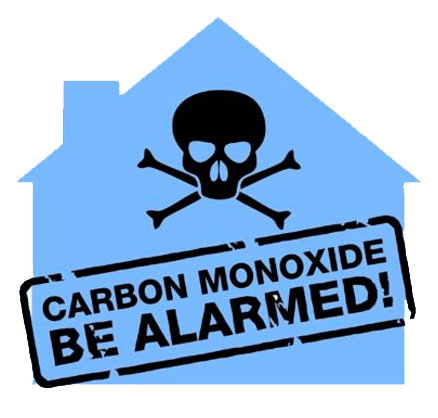What is carbon monoxide (CO) and how is it produced your home?
Carbon monoxide (CO) is a colorless, odorless, poisonous gas. Carbon monoxide is produced when natural fuels are burned at high temperatures with incomplete combustion in a gas or oil furnace, gas water heater, fireplace, space heater, wood stove, wood-burning cook stove, or any appliance that operates on a flammable fuel like natural gas, fuel oil, wood, coal, or kerosene, as well as gasoline, propane, and diesel. This also includes gas ranges and ovens, gas clothes dryers, and charcoal grills. It’s important to remember to take steps to prevent carbon monoxide in your home. Every year, over hundreds of people in the United States die from CO produced by fuel-burning appliances and Several thousand people go to hospital emergency rooms for treatment for CO poisoning.
What are the symptoms of CO poisoning?
The beginning symptoms of CO poisoning are similar to the flu (but without the fever). They include: Headache, Fatigue, Shortness of breath, Nausea, Dizziness. Many people with CO poisoning mistake their symptoms for the flu and can even be misdiagnosed by physicians.
What should you do to prevent CO poisoning?
Make sure appliances are installed by professionals and according to manufacturer’s instructions and local building codes. Also, have your heating system inspected and serviced annually by Gustafson Heating. The inspection will include looking for flues blocked, corrosion, loose connections and proper combustion air. Gustafson heating can install a CO detector/alarm if needed (it’s the Law). Detectors should be in the hallway near every separate sleeping area of the home not more than 15 ft. away. Make sure the detector cannot be covered up by furniture or draperies. But remember, there’s no substitute for proper upkeep of appliances that can produce CO. Never use portable fuel-burning camping equipment inside a home, garage, vehicle, or tent and never leave a car running in an attached garage, even with the garage door open. Never use gas appliances such as ranges, ovens, or clothes dryers for heating your home.
What CO level is dangerous to your health?
The health effects of CO depend on the level of CO and length of exposure, as well as each individual’s health condition. The concentration of CO is measured in parts per million (ppm). Health effects from exposure to CO levels of approximately 1 to 70 ppm are uncertain, but most people will not experience any symptoms, but as CO levels increase and remain above 70 ppm, symptoms may become more noticeable (headache, fatigue, nausea). As CO levels increase above 150 to 200 ppm, disorientation, unconsciousness, and death are possible.
What should you do when the CO detector/alarm sounds?
Never ignore an alarming CO detector. If the detector/alarm sounds: Operate the reset button. Call your emergency services (fire department or 911) and immediately move to fresh air — outdoors or by an open door/window.




